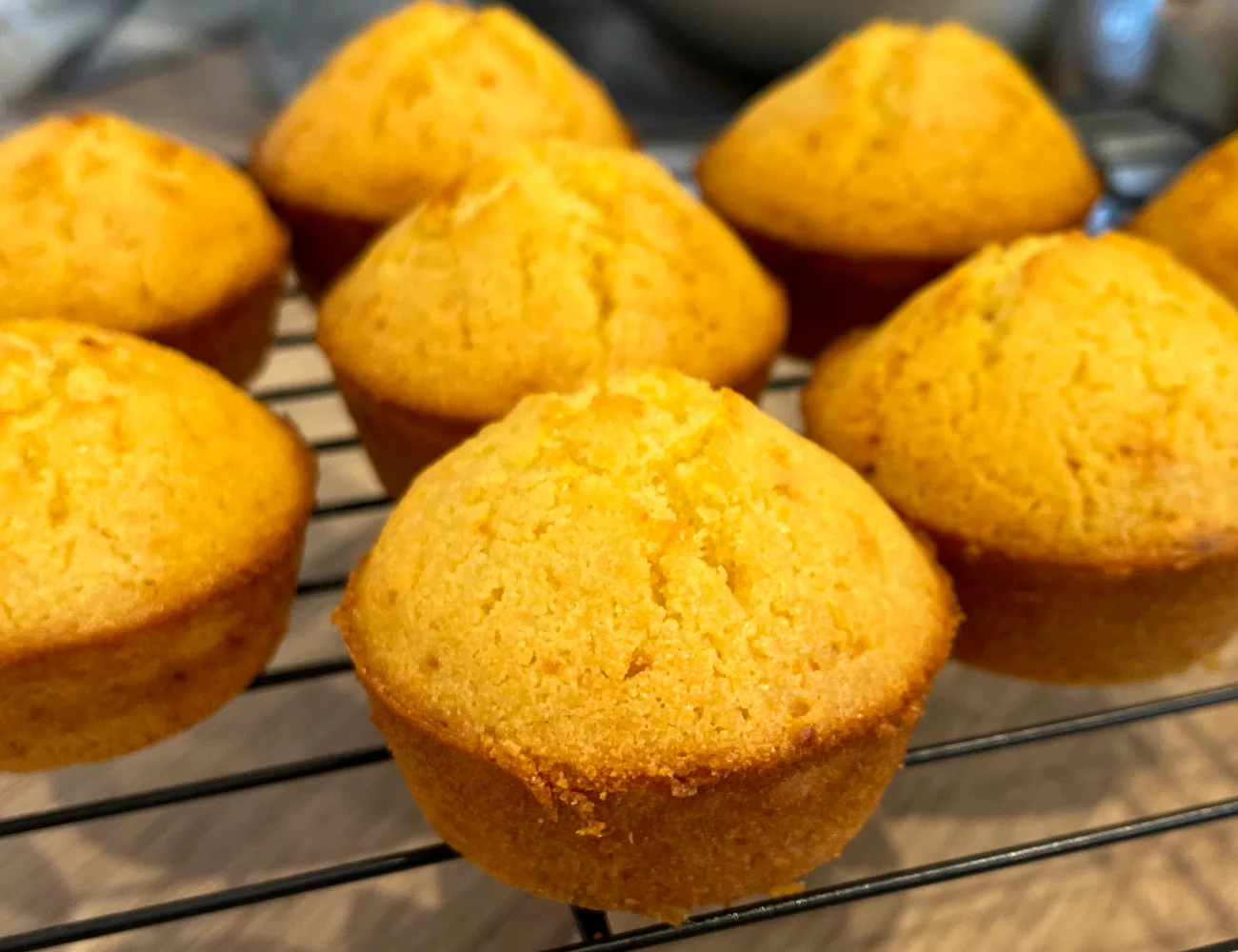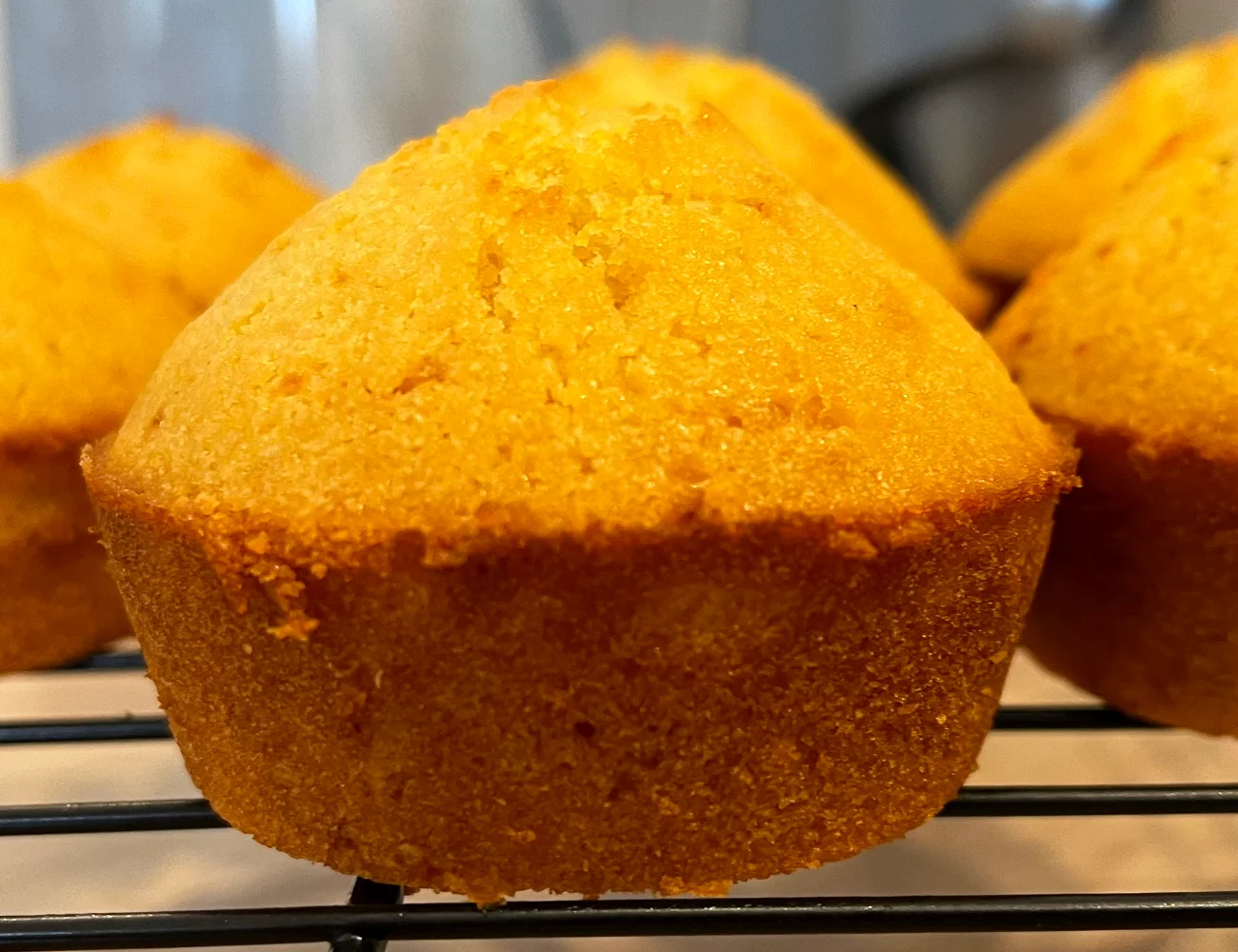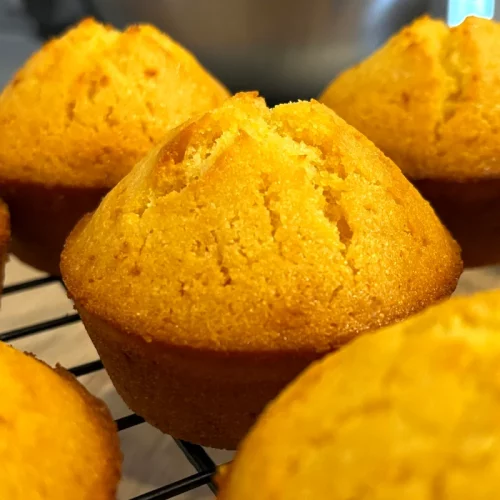Cornbread, a staple of American cuisine with roots deep in history, has evolved into various forms, including the delightful honey cornbread muffins. This journey from traditional cornbread to its modern, sweetened variant reveals a tale of culinary adaptation and cultural fusion.
The Historic Fabric of Cornbread
Originating from Native American tribes, cornbread was initially a simple mixture of ground cornmeal and water. Post European colonization, it took on new dimensions, incorporating ingredients like milk, eggs, and sweeteners, evolving into what we know today. This culinary evolution mirrors the cultural tapestry of America, where diverse influences blend into unique creations.

The Transition to Muffins
Muffins, an English invention, were warmly embraced by Americans who added their own twist, leading to the creation of cornbread muffins. These small, quick-baking breads were ideal for the fast-paced American lifestyle, making them a popular household item.
Honey cornbread muffins embody a delicious intersection of history and regional flavors. Understanding the differences between Northern and Southern cornbread traditions is key to appreciating this recipe’s depth.
Cornbread muffins, as a distinct variation of traditional cornbread, rose in popularity in America during the 19th century. This trend was largely due to the increased availability and use of baking powder after its invention in the mid-1800s.
The history of cornbread itself in America dates back much further, with its roots in Native American cuisine. Corn, a staple crop for many Native American tribes, was ground into cornmeal and used to make a variety of bread-like dishes. European settlers adopted and adapted these recipes, and cornbread became a common food, especially in the Southern United States, where wheat flour was less available.
The invention of baking powder in the 1850s revolutionized baking, including cornbread recipes. Baking powder, as a leavening agent, allowed for quicker and more reliable rising of breads without the need for yeast. This innovation made it easier to bake lighter and fluffier breads, including muffins.
Cornbread muffins likely evolved as a convenient and portable version of traditional cornbread. The late 19th and early 20th centuries saw the rise in popularity of quick breads (breads that are leavened without yeast), and muffins fit neatly into this category. They were particularly appealing for their ease of preparation and their suitability for individual servings, which matched the fast-paced lifestyle of a modernizing America.
The 20th century saw further popularization and diversification of cornbread and cornbread muffins, with regional and individual variations emerging, incorporating different ingredients and techniques, such as sweeteners like sugar or honey, different types of fat (like butter or lard), and additions like corn kernels or jalapeños.

North vs. South: The Cornbread Divide
In the Southern United States, cornbread is often hailed as a savory, less sweetened staple, made predominantly with cornmeal. This tradition stems from the South’s historical reliance on corn as a primary grain. Southern cornbread is typically denser, made with buttermilk, and frequently cooked in a skillet, giving it a characteristic crust.
Conversely, Northern cornbread often incorporates more flour and sugar, resulting in a cake-like, sweeter bread. This variation reflects the Northern palate and the broader availability of diverse ingredients. The Northern version is lighter and fluffier, often baked in baking dishes or muffin tins.
The shift from stone mills to steel mills in the early 1900s in the South significantly impacted the production of cornmeal and, consequently, the taste and texture of cornbread, including cornbread muffins. This change played a pivotal role in the divergence of cornbread recipes between the North and South, particularly in the use of sugar.
Stone Mills vs. Steel Mills: The Impact on Cornmeal
Stone Mills: Traditionally, cornmeal was ground using stone mills. This method produced a coarser, more textured meal that retained more of the corn’s natural flavor and nutrients. Stone-ground cornmeal had a richer taste and a heartier texture, which was well-suited to the Southern palate and style of cornbread, known for its savory and less sweet profile.
Steel Mills: With the advent of industrialization, steel roller mills became prevalent in the early 20th century. These mills produced a finer, more uniform cornmeal. The steel milling process also tended to strip away the germ and bran from the corn kernel, resulting in a product with a lighter texture and less of the original corn flavor. This finer cornmeal was more akin to wheat flour in consistency.
The Introduction of Sugar in Southern Cornbread
The change in cornmeal texture and taste led to adaptations in cornbread recipes in the South. The finer, blander cornmeal lacked the robust flavor of the traditional stone-ground meal, leading some cooks to add sugar to their recipes to enhance the flavor. This addition of sugar was a departure from the classic Southern cornbread, which traditionally did not include sweeteners.
In contrast, Northern cornbread, which had already embraced a sweeter profile, was less affected by this change. The Northern palate favored a lighter, cake-like cornbread, and the finer cornmeal from steel mills was well-suited to this preference.
Honey Cornbread Muffins: A Fusion Recipe
This recipe for honey cornbread muffins bridges these regional differences, creating a delightful blend that pays homage to both traditions.
Ingredients:
- Cornmeal (120g/1 cup): The essence of Southern cornbread, providing a robust corn flavor and texture.
- Flour (125g/1 cup): A nod to the Northern style, lending softness and structure to the muffins.
- Baking Powder (1.5 tsp): For leavening, ensuring a light, Northern-inspired texture.
- Salt (pinch): Enhances the flavors, balancing the sweetness.
- Brown Sugar (67g/1/3 cup): Brings a Northern touch of sweetness, complementing the cornmeal.
- Honey (2 tbsp): The centerpiece, unifying the two styles with its natural sweetness.
- Butter (75 g, melted): Adds moisture and richness. Use lactose free butter or clarified butter for lactose intolerances.
- Egg (one large): Binds the ingredients, contributing to the muffin’s structure.
- Milk (240ml/1 cup): Moistens the batter. Substituting with buttermilk nods to the Southern tradition, adding tang and tenderness.
Culinary Harmony
These honey cornbread muffins represent a harmonious blend of North and South. The use of both cornmeal and flour, combined with the sweetness of honey and brown sugar, creates a muffin that’s light yet satisfying, sweet yet grounded in cornbread’s rustic roots. This recipe celebrates the diverse culinary landscapes of America, bringing together distinct regional flavors into a single, delightful treat.
Cornbread Muffins
Equipment
- 2 mixing bowls
- muffin pan one portion of this recipe makes about 10 medium-sized muffins
Ingredients
- 1 cup corn meal or fine polenta
- 1 cup all purpose flour
- 3 tsp baking powder
- ¼ tsp fine salt
- 5 ½ tbsp butter
- ⅓ cup brown sugar
- 2 tbsp honey
- 1 whole egg large
- 1 cup whole milk
Instructions
- Preheat oven to 425° F (218° C) static.
- In a mixing bowl, combine all of the dry ingredients: corn meal, flour, baking powder and brown sugar.1 cup corn meal, 1 cup all purpose flour, 3 tsp baking powder, ¼ tsp fine salt, ⅓ cup brown sugar
- In another mixing bowl or large measuring cup, whisk together the wet ingredients: melted butter, honey, milk and egg.5 ½ tbsp butter, 2 tbsp honey, 1 whole egg, 1 cup whole milk
- Add the wet ingredients to the dry ingredients and mix until combined. Don't over mix the batter.
- Prepare your muffin pan by either inserting muffin liners into each cavity or generously coating the interior of each section with butter, followed by a dusting of flour to ensure a non-stick surface. Then, carefully dispense the batter into the medium-sized muffin pans, filling each cup approximately ¾ of the way up the sides to allow room for the muffins to rise during baking.
- Bake in preheated 425° F (218° C) oven for 5 minutes. This high initial temperature will help to ensure your cornbread muffins get a good rise.
- Leaving the muffins in the oven, drop the temperature to 350° F (177° C) and cook for 15-17 minutes— or until a toothpick or cake tester comes out clean.
- Leave the cornbread muffins in the muffin pans for 5 minutes until they are cool enough to handle. Then, transfer them to a cooling grid. Buon appetito!


